-
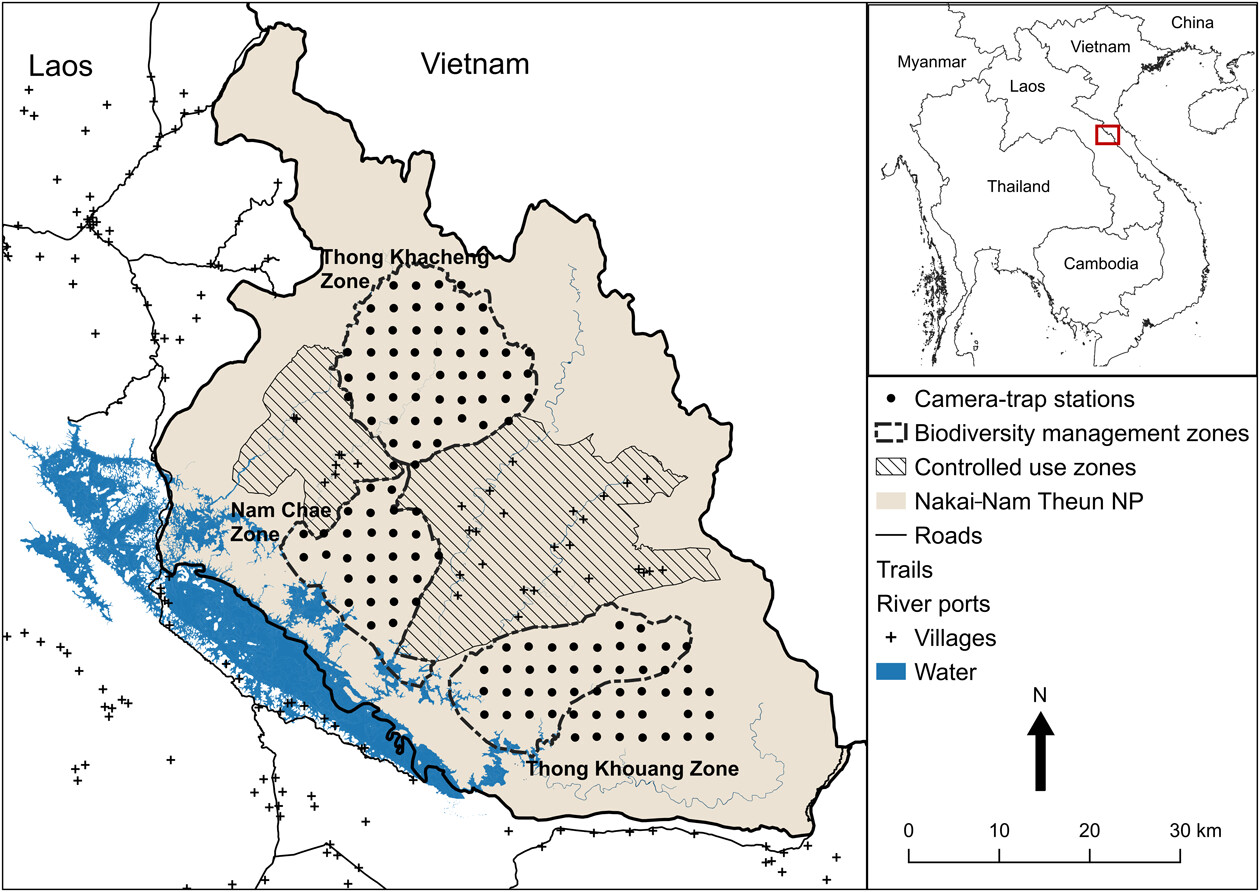
Alexiou et al. 2024
Multi-species occupancy modeling of ground-dwelling mammals in central Laos: a case study for monitoring in tropical forests. WILDL BIOL, e01261.
-
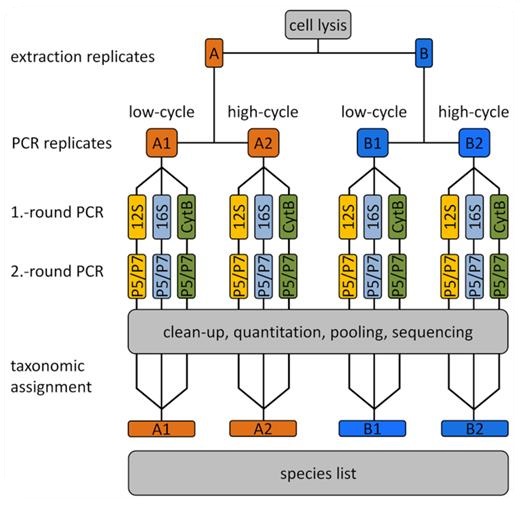
Axtner et al. 2019
An efficient and robust laboratory workflow and tetrapod database for larger scale environmental DNA studies. GIGASCIENCE, 8:giz029.
-
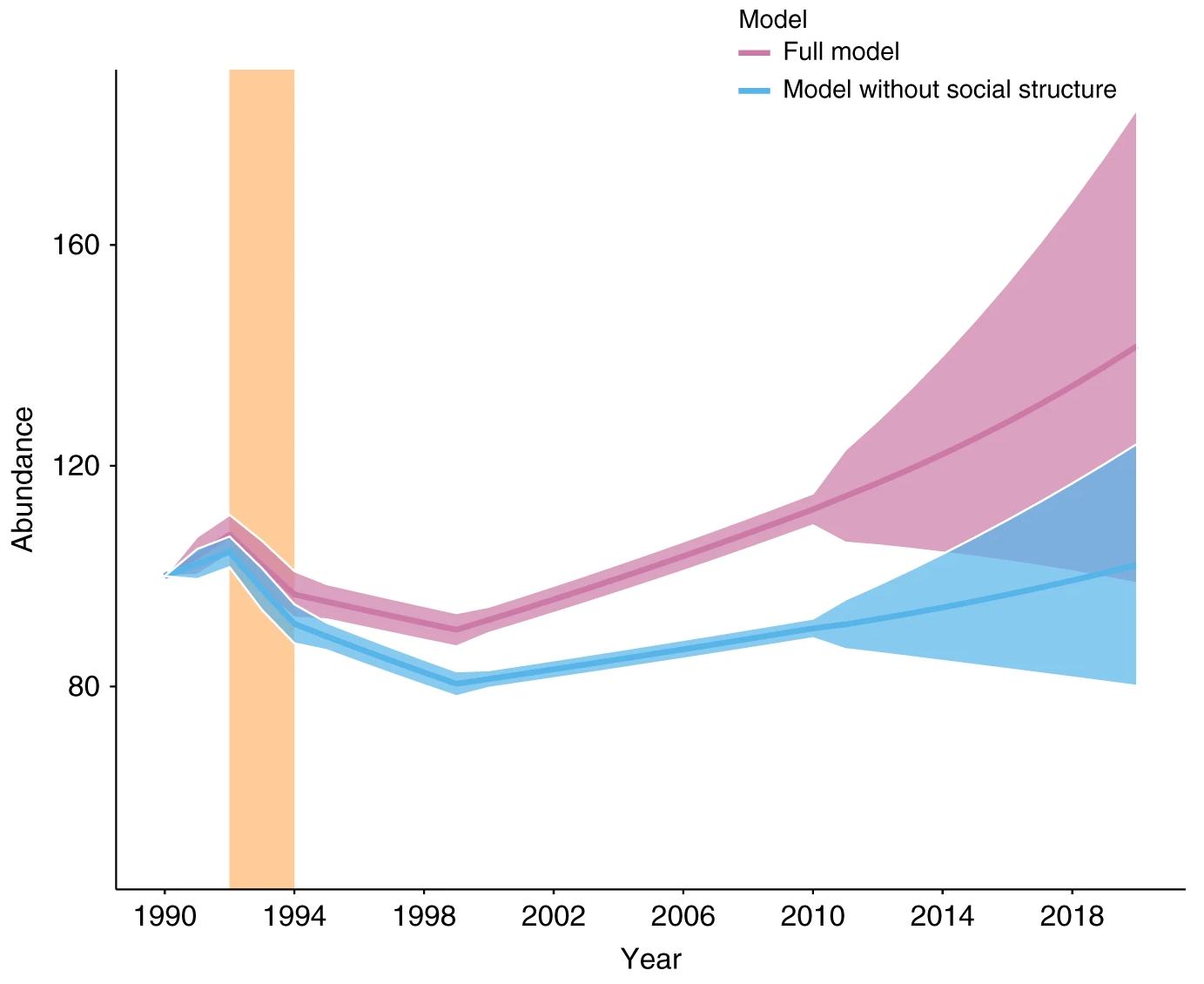
Benhaiem et al. 2018
Slow recovery from a disease epidemic in the spotted hyena, a keystone social carnivore. COMMUN BIOL, 1:201.
-
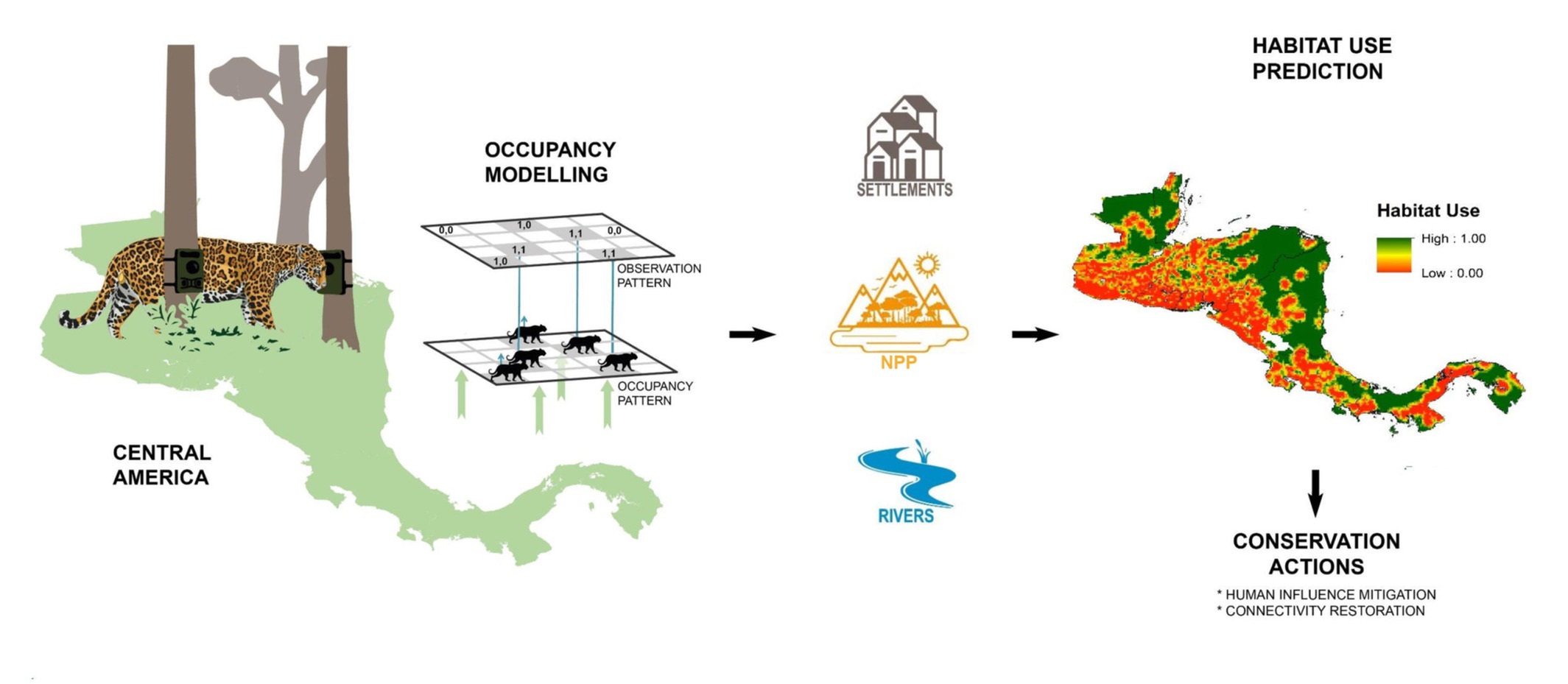
Calderon et al. 2022
Occupancy models reveal potential of conservation prioritization for Central American jaguars. ANIM CONSERV.
-
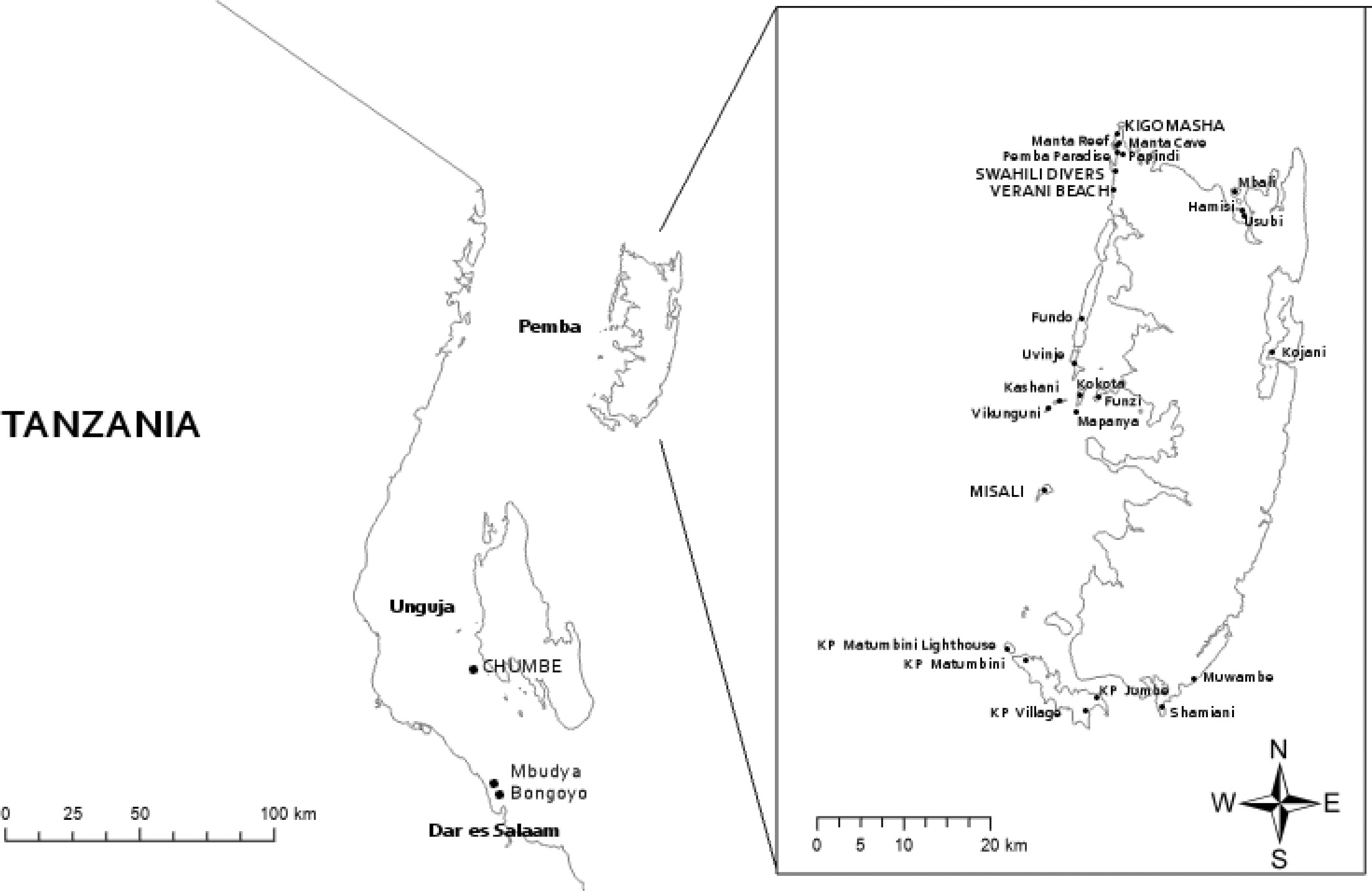
Caro et al. 2023
Meta- and subpopulation estimation with disparate data: coconut crabs in the Western Indian Ocean. ANIM CONSERV.
-
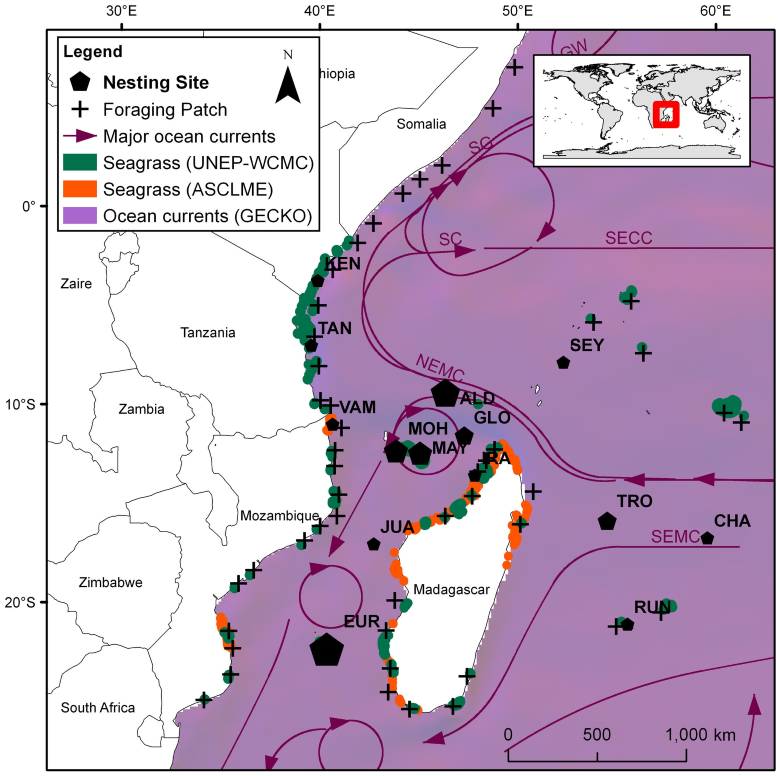
Dalleau et al. 2019
Modeling the emergence of migratory corridors and foraging hot spots of the green sea turtle. ECOL EVOL, 9:10317–1034.
-
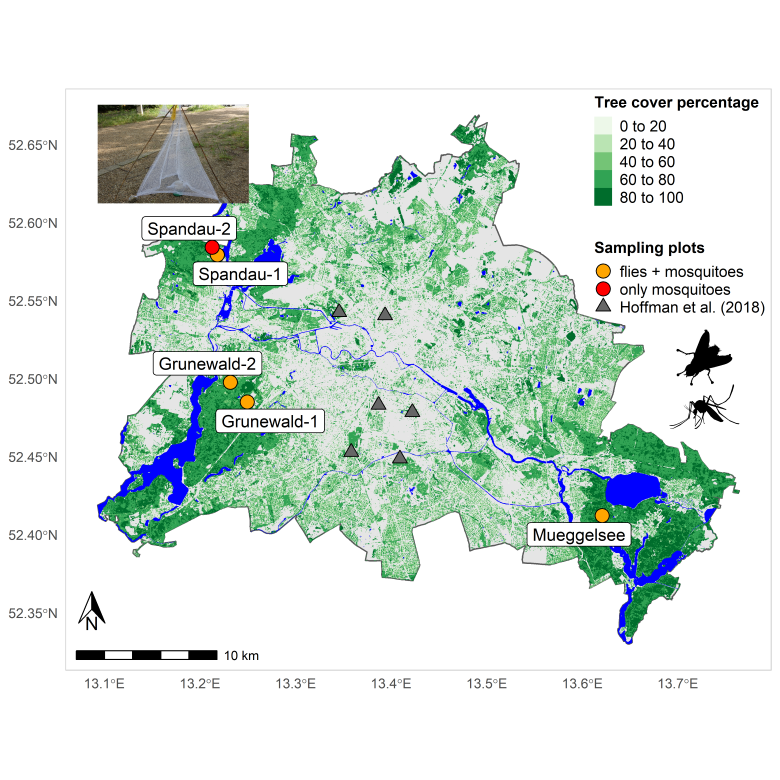
Danabalan et al. 2023
Comparison of mosquito and fly derived DNA as a tool for sampling vertebrate biodiversity in suburban forests in Berlin, Germany. ENVIRON DNA.
-
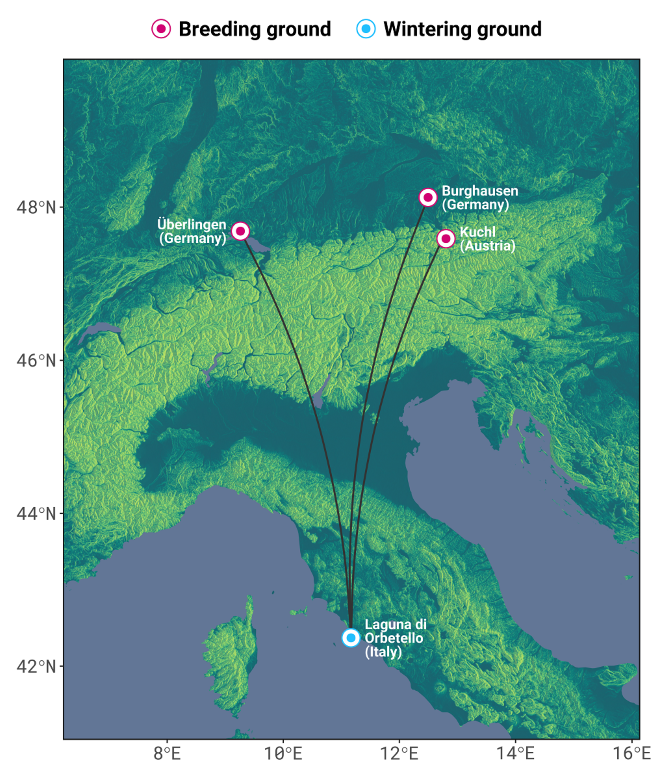
Drenske et al. 2023
On the road to self-sustainability: reintroduced migratory European northern bald ibises Geronticus eremita still need management interventions for population viability. ORYX, 1-12.
-
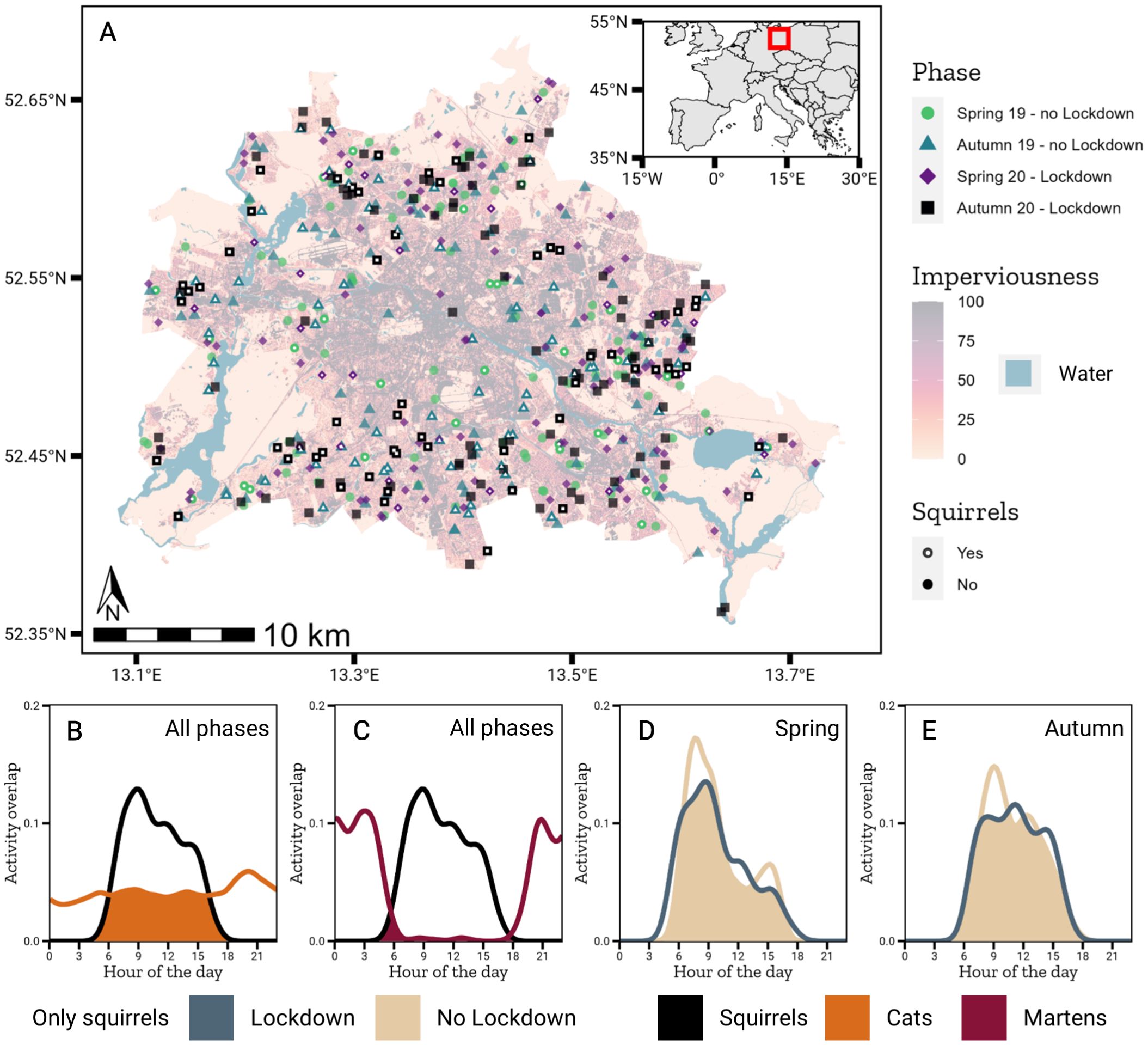
Drenske et al. 2024
Human and predator presence shape diel activity of urban red squirrels. FRONT ECOL EVOL, 12:1455142.
-
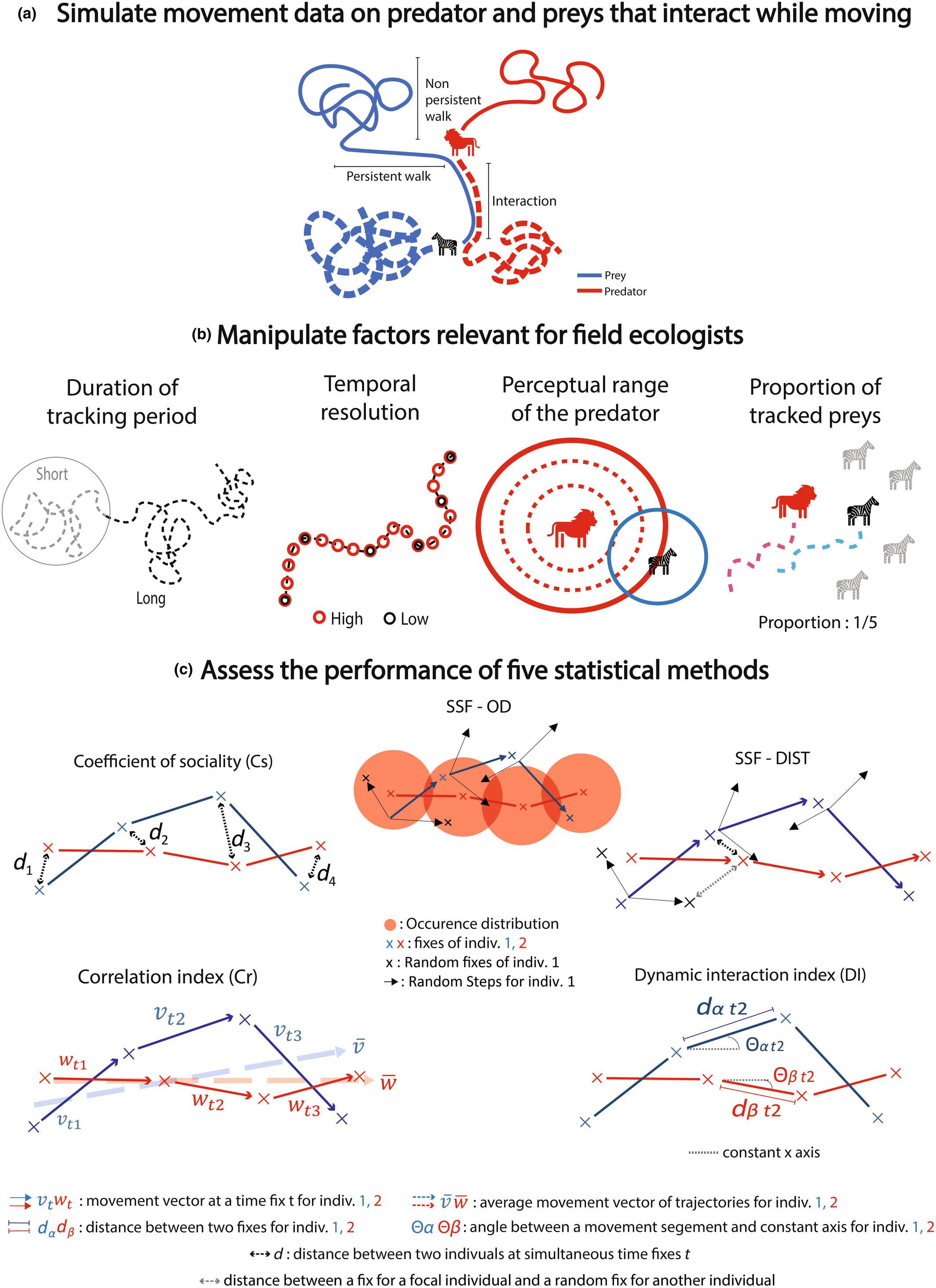
Fronville et al. 2024
Performance of five statistical methods to infer interactions among moving individuals in a predator–prey system. METHODS ECOL EVOL, 00, 1–16.
-
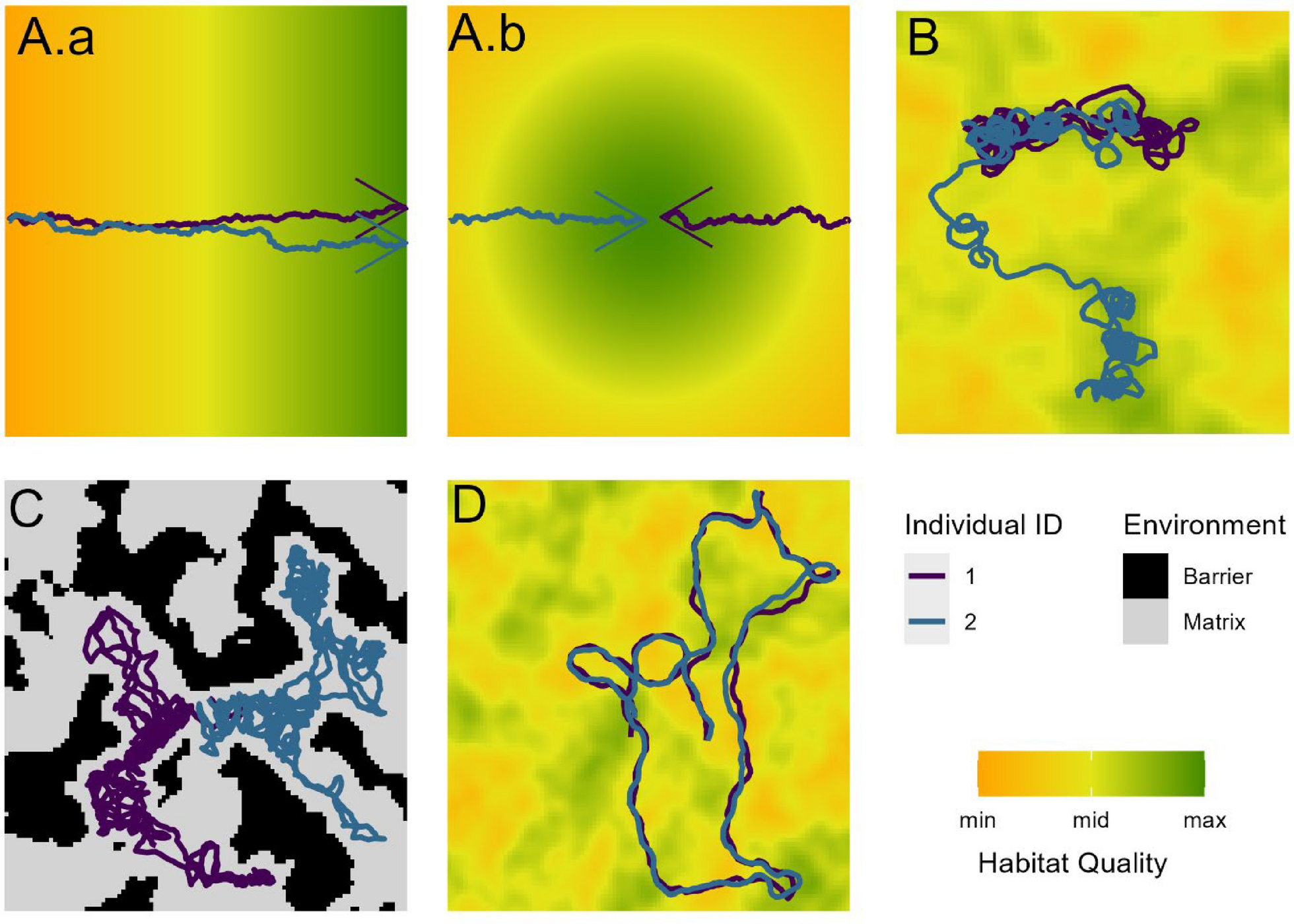
Fronville et al. 2025
Considering landscape heterogeneity improves the inference of inter-individual interactions from movement data. MOVE ECOL, 13, 41.
-
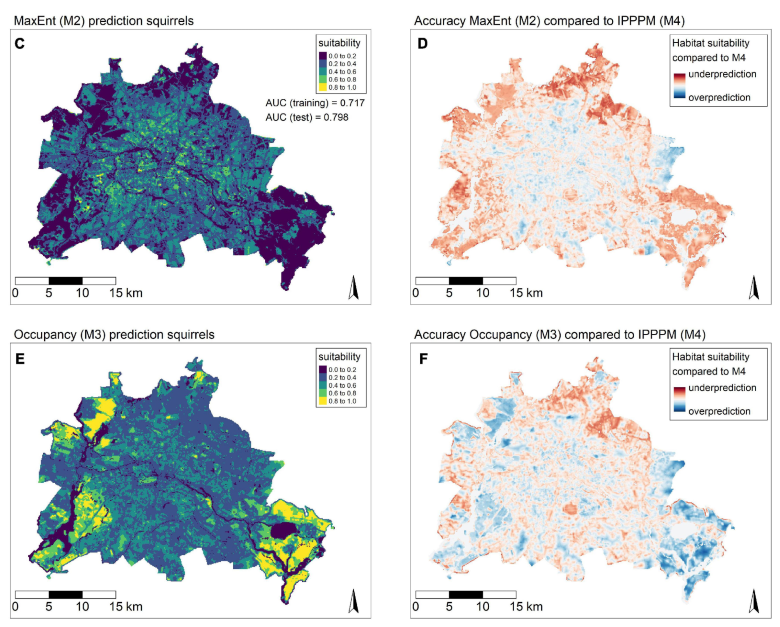
Grabow et al. 2022
Data-integration of opportunistic species observations into hierarchical modeling frameworks improves spatial predictions for urban red squirrels. FRONT ECOL EVOL, 10:881247.
-
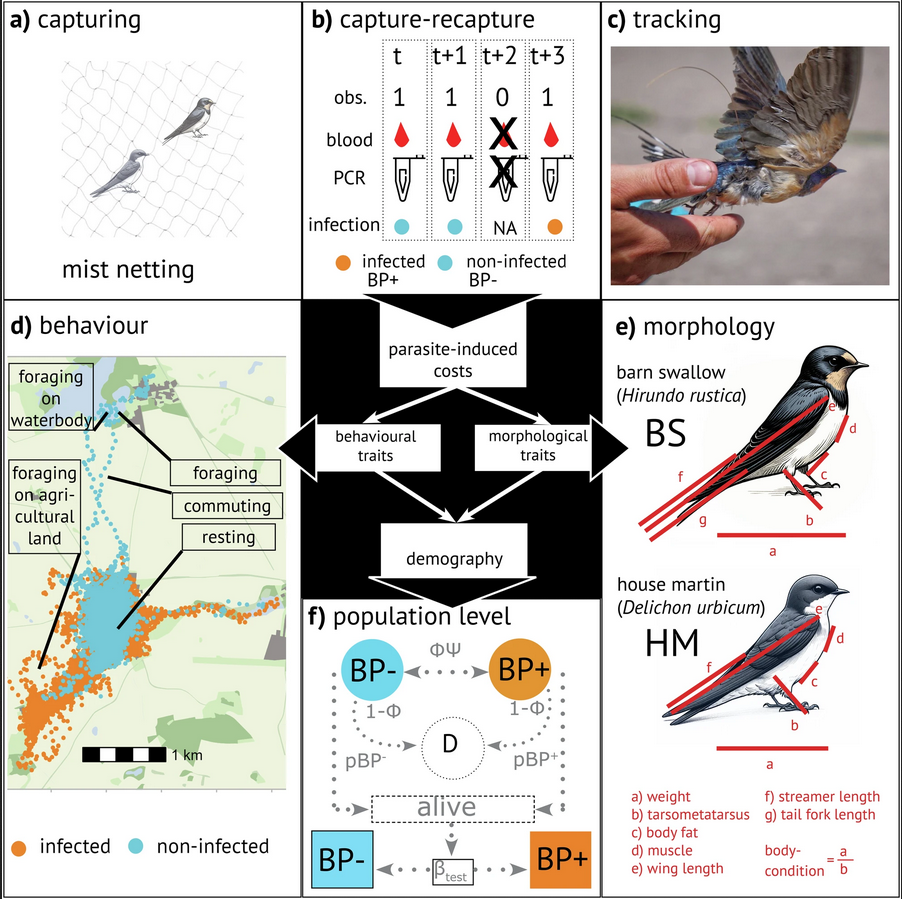
Grabow et al. 2024
Sick without signs. Subclinical infections reduce local movements, alter habitat selection, and cause demographic shifts. COMMUN BIOL, 7, 1426.
-
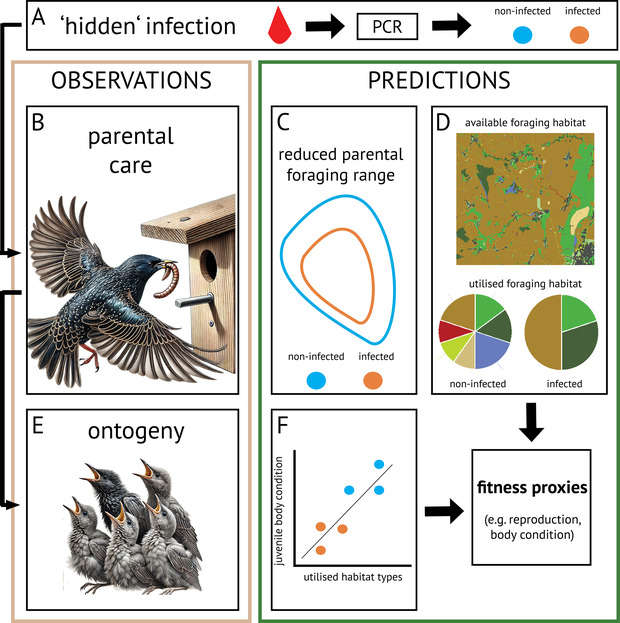
Grabow et al. 2025
Pathogen-induced alterations in fine-scale movement behaviour predict impaired reproductive success. PROC R SOC B, 292:20250238.
-
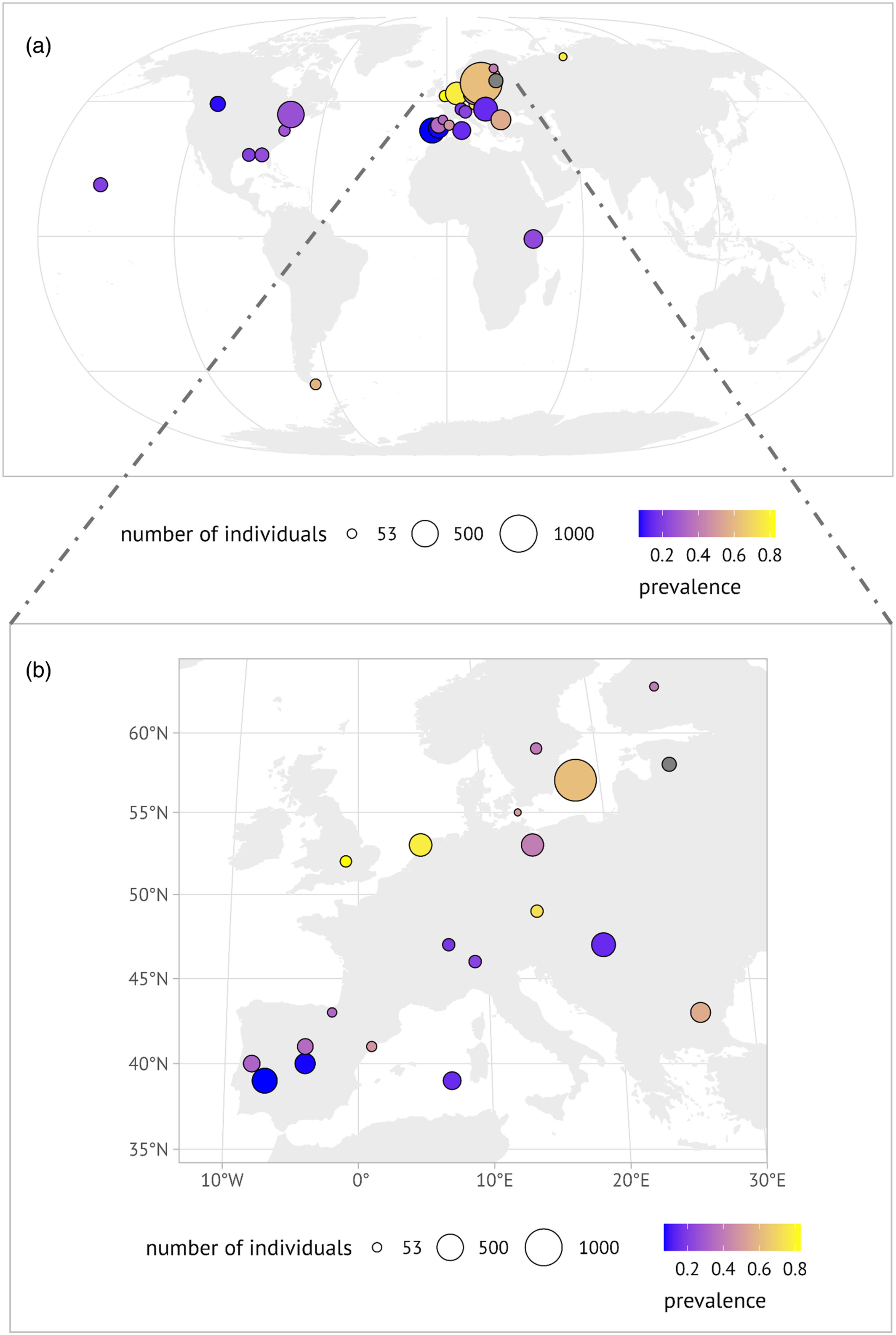
Grabow et al. 2025
Subtle stressors—Strong responses. Consistent negative effects of avian blood parasites on phenotypic and demographic traits across songbirds. J ANIM ECOL, 00, 1–14.
-
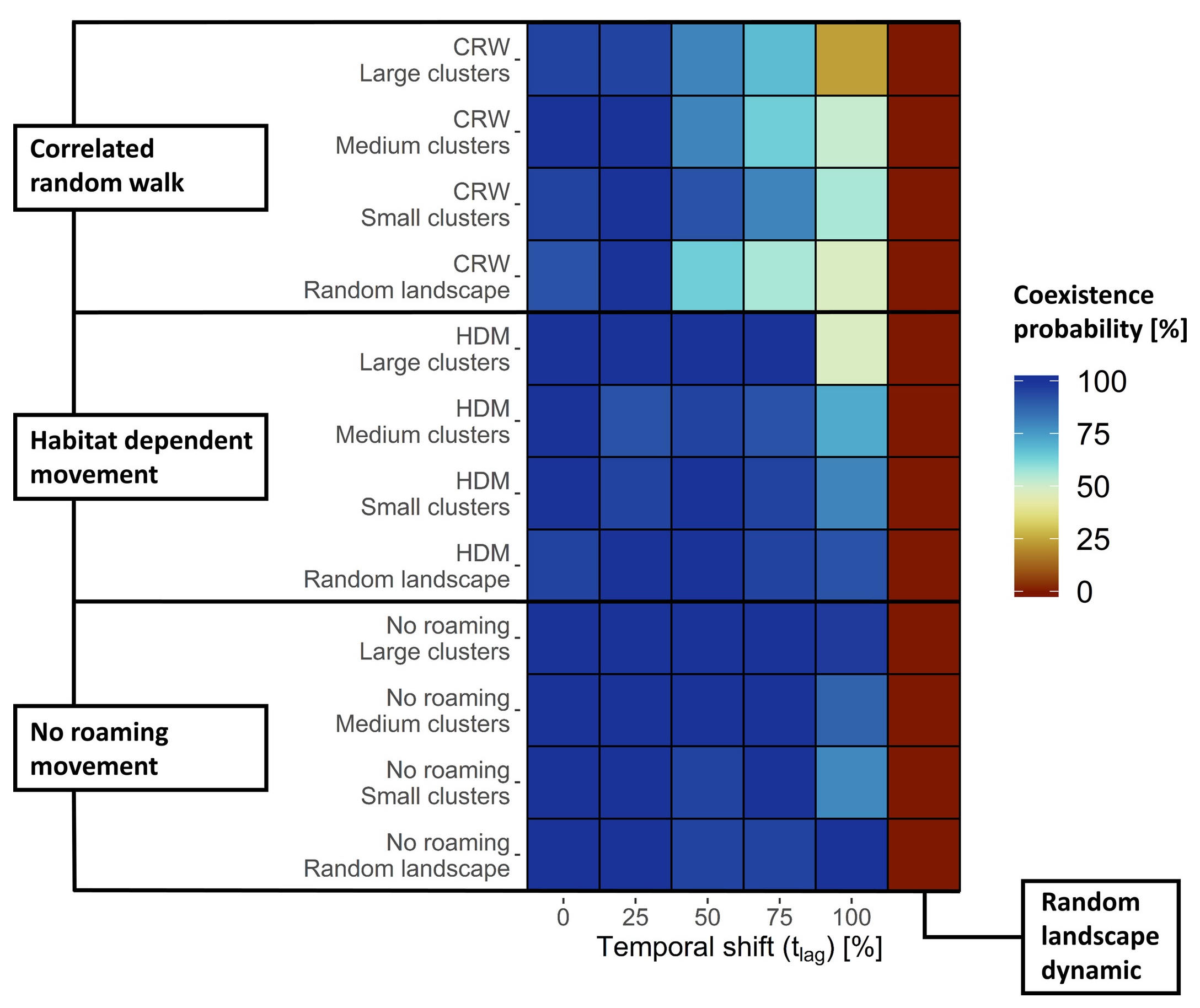
Kürschner et al. 2021
Movement can mediate temporal mismatches between resource availability and biological events in host–pathogen interactions. ECOL EVOL, 11:5728–5741.
-
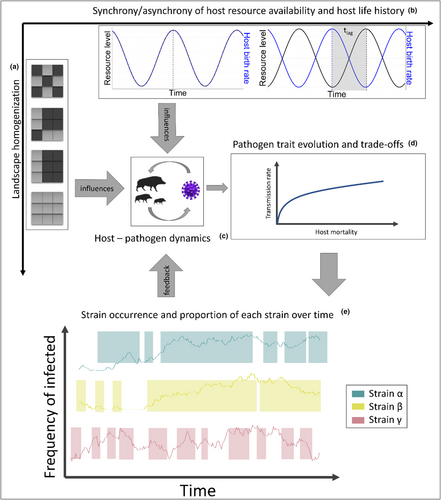
Kürschner et al. 2024
Resource asynchrony and landscape homogenization as drivers of virulence evolution: The case of a directly transmitted disease in a social host. ECOL EVOL, 14, e11065.
-
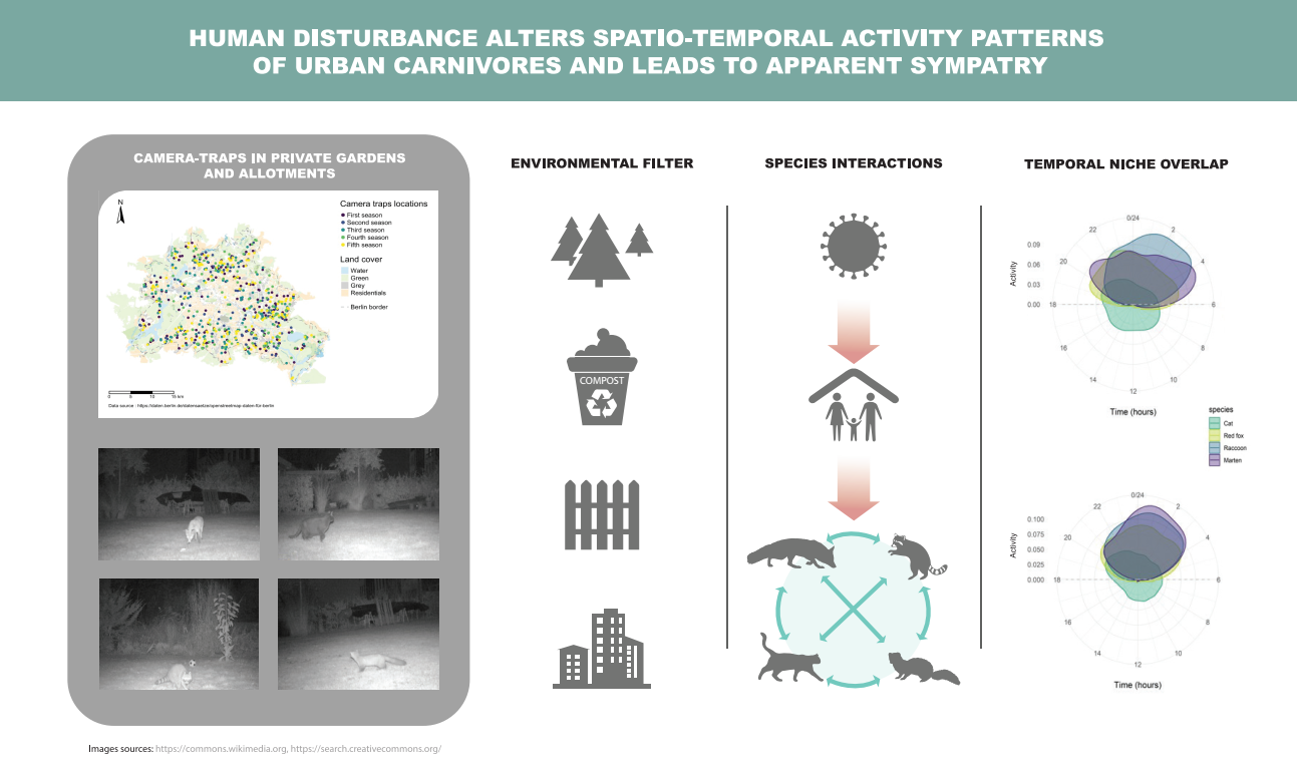
Louvrier et al. 2022
Spatiotemporal interactions of a novel mesocarnivore community in an urban environment before and during SARS-CoV-2 lockdown. J ANIM ECOL, 91:367–380.
-
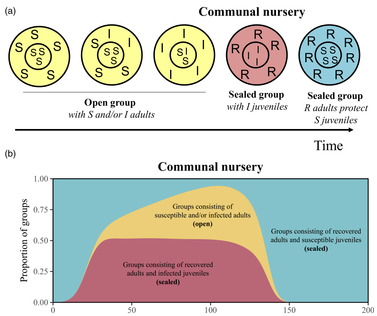
Marescot et al. 2020
‘Keeping the kids at home’ can limit the persistence of contagious pathogens in social animals. J ANIM ECOL, 90:2523–2535.
-
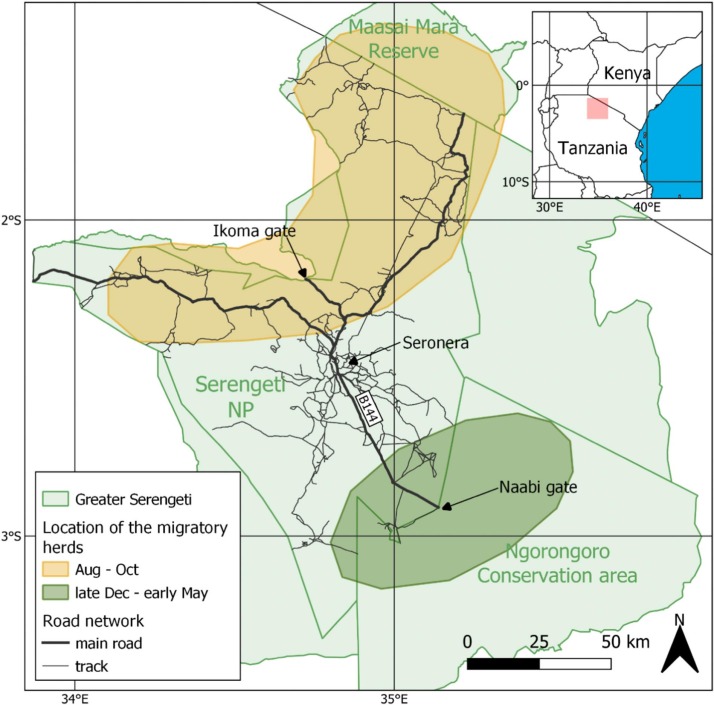
Naciri et al. 2023
Three decades of wildlife-vehicle collisions in a protected area: Main roads and long-distance commuting trips to migratory prey increase spotted hyena roadkills in the Serengeti BIOL CONSERV, 279, 109950.
-
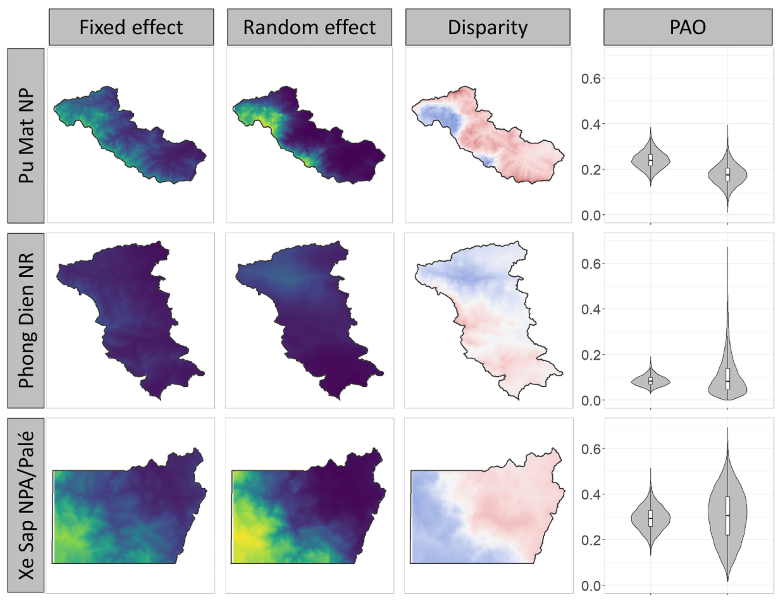
Nguyen et al. 2021
Getting the big picture: Landscape-scale occupancy patterns of two Annamite endemics among multiple protected areas. CONS SCI PRACT, 4:e620.
-
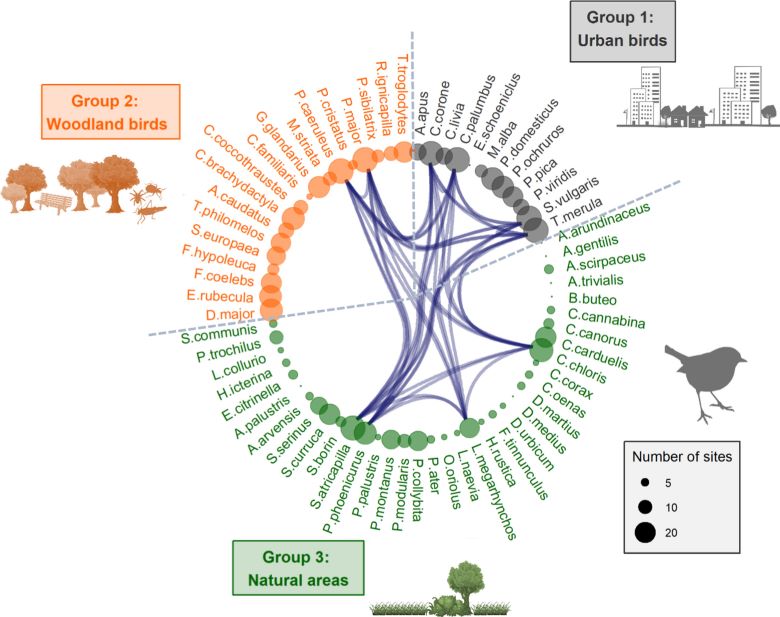
Planillo et al. 2021
Arthropod abundance modulates bird community responses to urbanization. DIV DIST, 27:34-49.
-
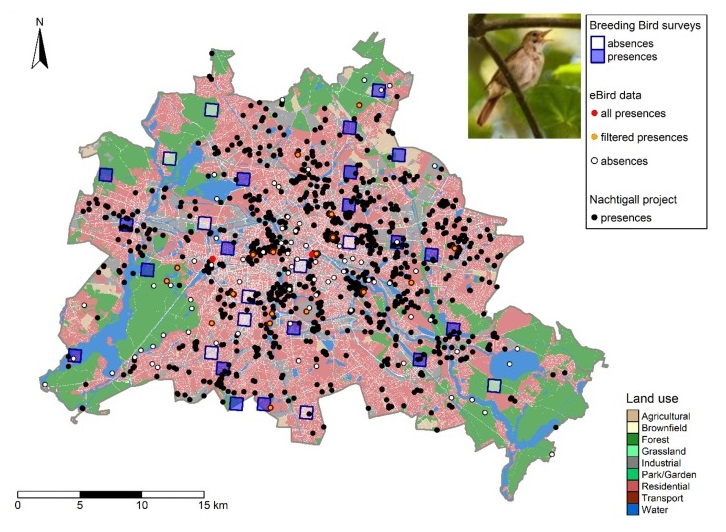
Planillo et al. 2021
Citizen science data for urban planning: Comparing different sampling schemes for modelling urban bird distribution. LAND URB PLAN, 211:104098.
-
Planillo et al. 2024
Understanding habitat selection of range-expanding populations of large carnivores: 20 years of grey wolves (Canis lupus) recolonizing Germany. DIVDIST, 00, 1–16.
-
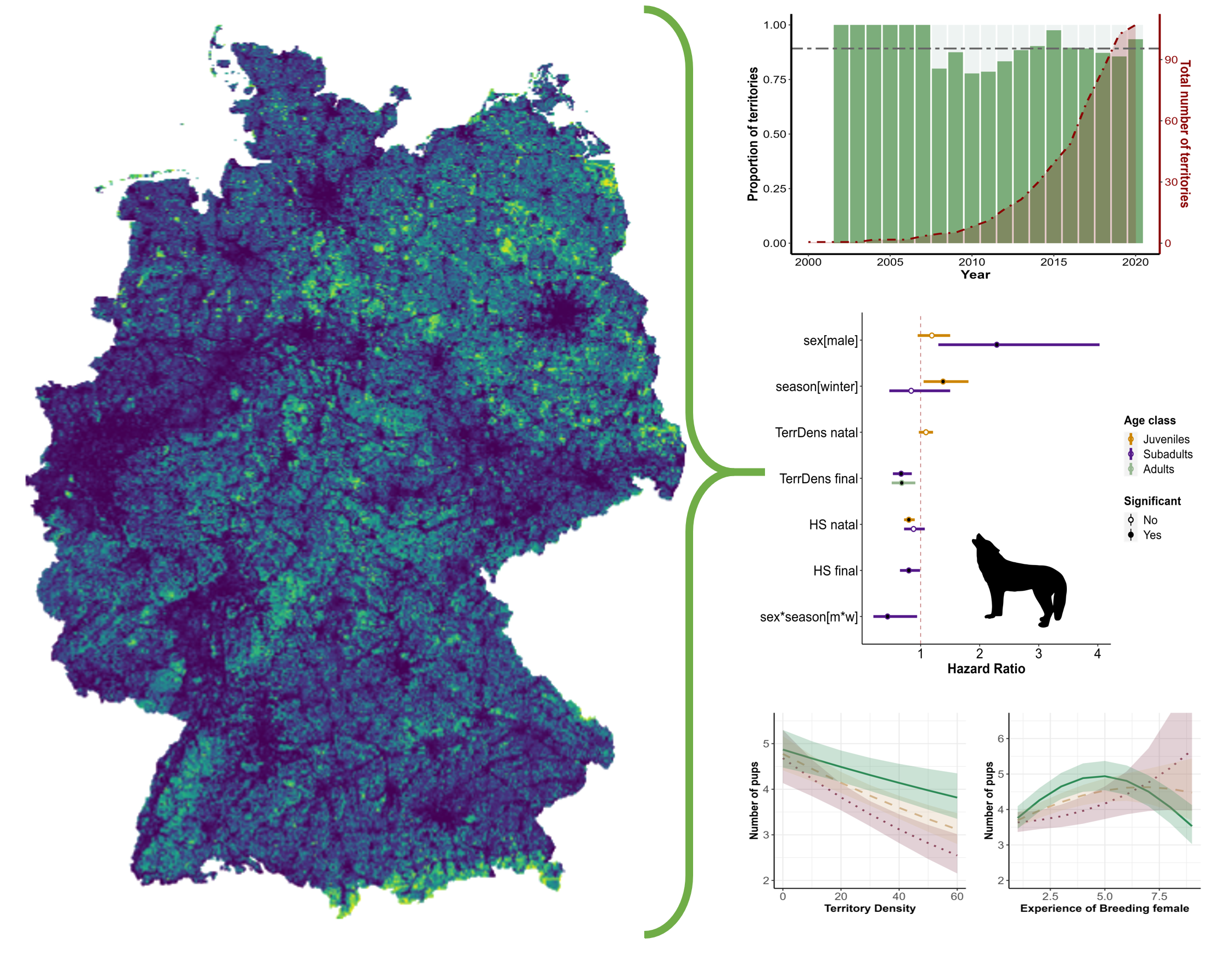
Planillo et al. 2024
Habitat and density effects on the demography of an expanding wolf population in Central Europe. Wildlife Biology. WILDL BIOL.
-
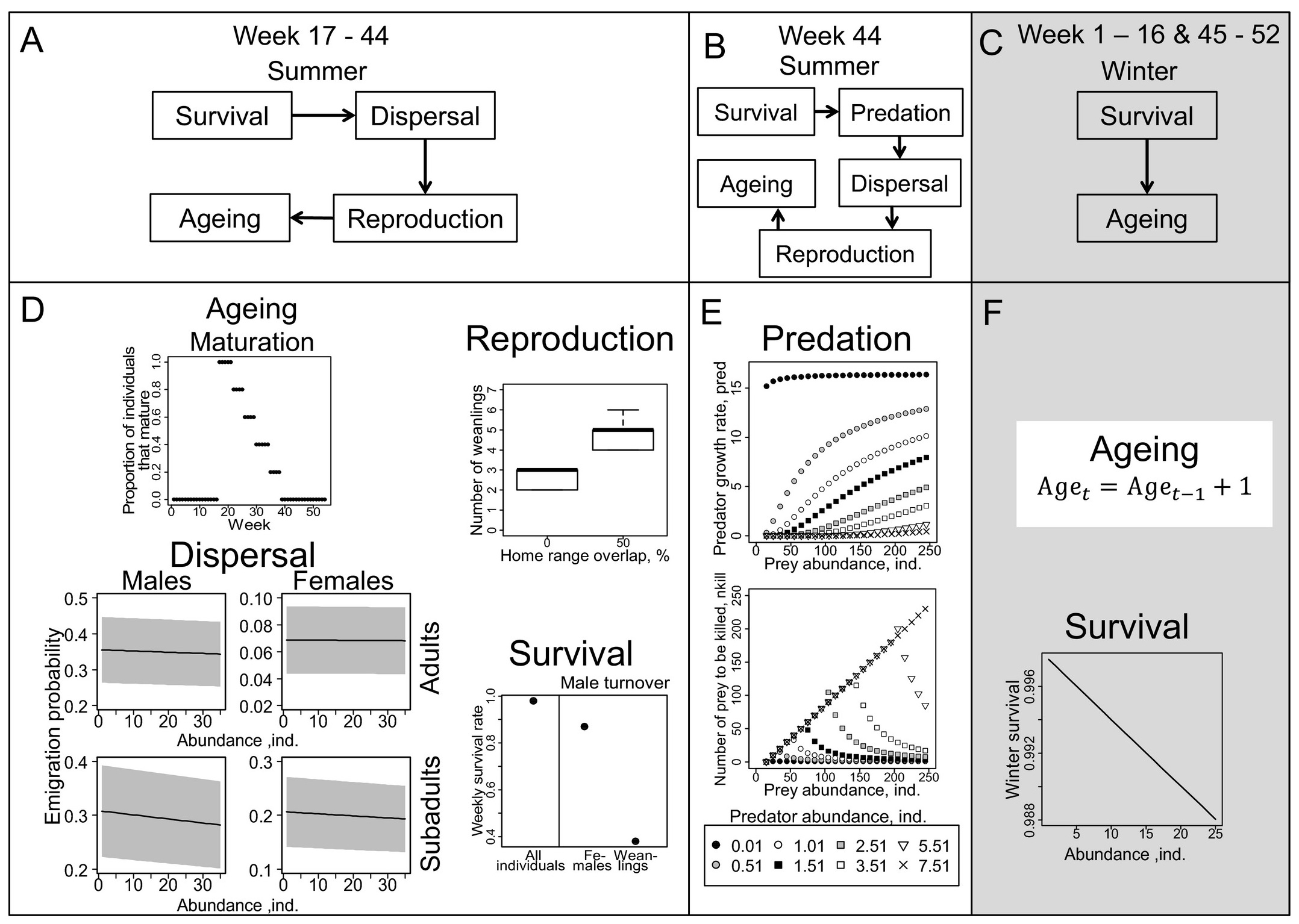
Radchuk et al. 2016
From individuals to population cycles: the role of extrinsic and intrinsic factors in rodent populations. ECOLOGY, 97:720-732.
-
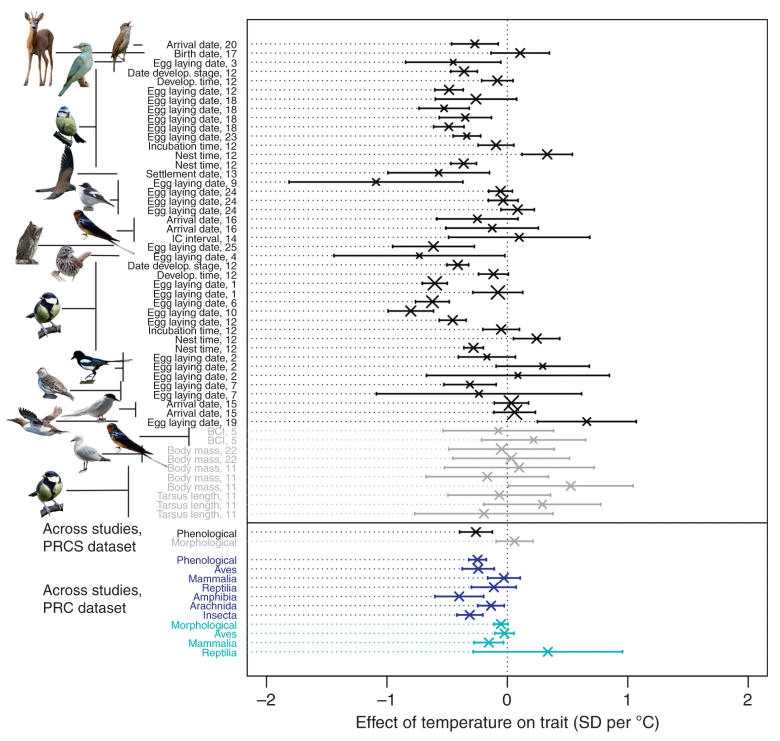
Radchuk et al. 2019
Adaptive responses of animals to climate change are most likely insufficient. NAT COM, 10:3109.
-
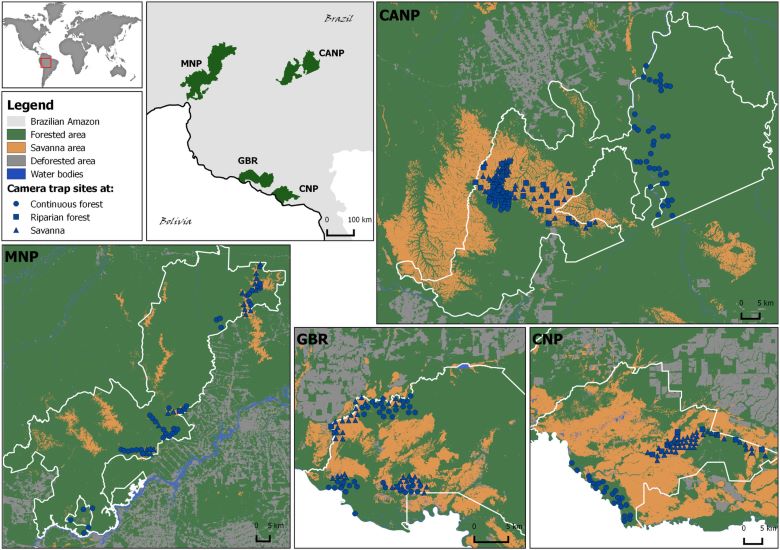
Rocha & Sollmann 2023
Habitat use patterns suggest that climate-driven vegetation changes will negatively impact mammal communities in the Amazon. ANIM CONSERV.
-
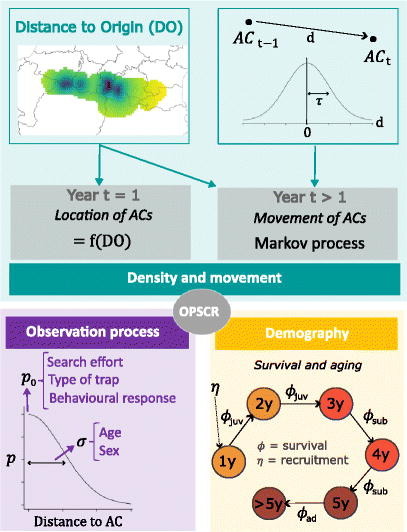
Sanz-Perez et al. 2025
Mapping sex- and age-structure reveals lonely males at the front in an expanding brown bear population. BIOL CONSERV.
-
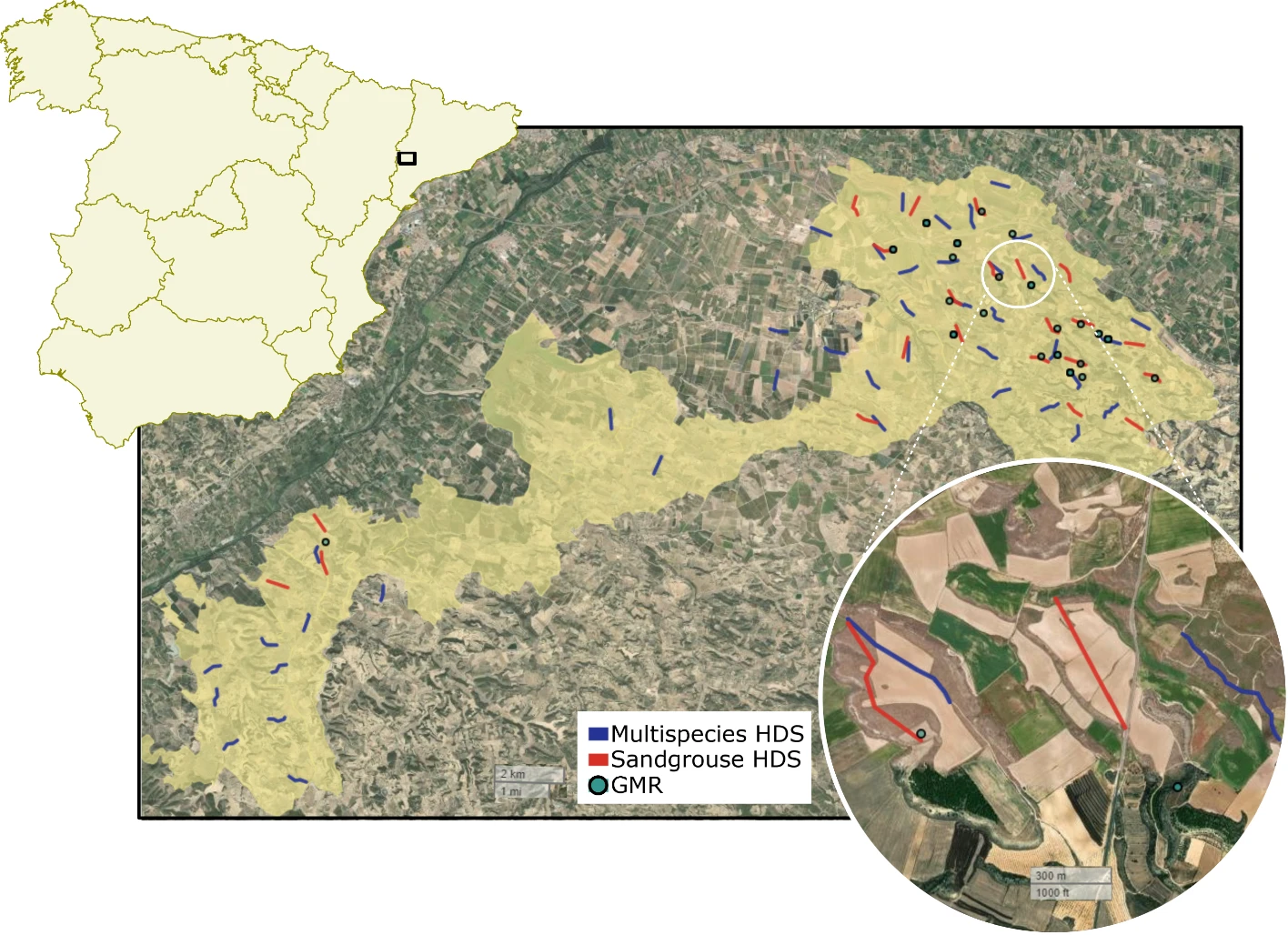
Sanz-Perez et al. 2025
How to better count elusive birds? Comparing non-invasive monitoring methods to estimate population size of the threatened Pin-tailed sandgrouse (Pterocles alchata). BIODIVERS CONSERV.
-
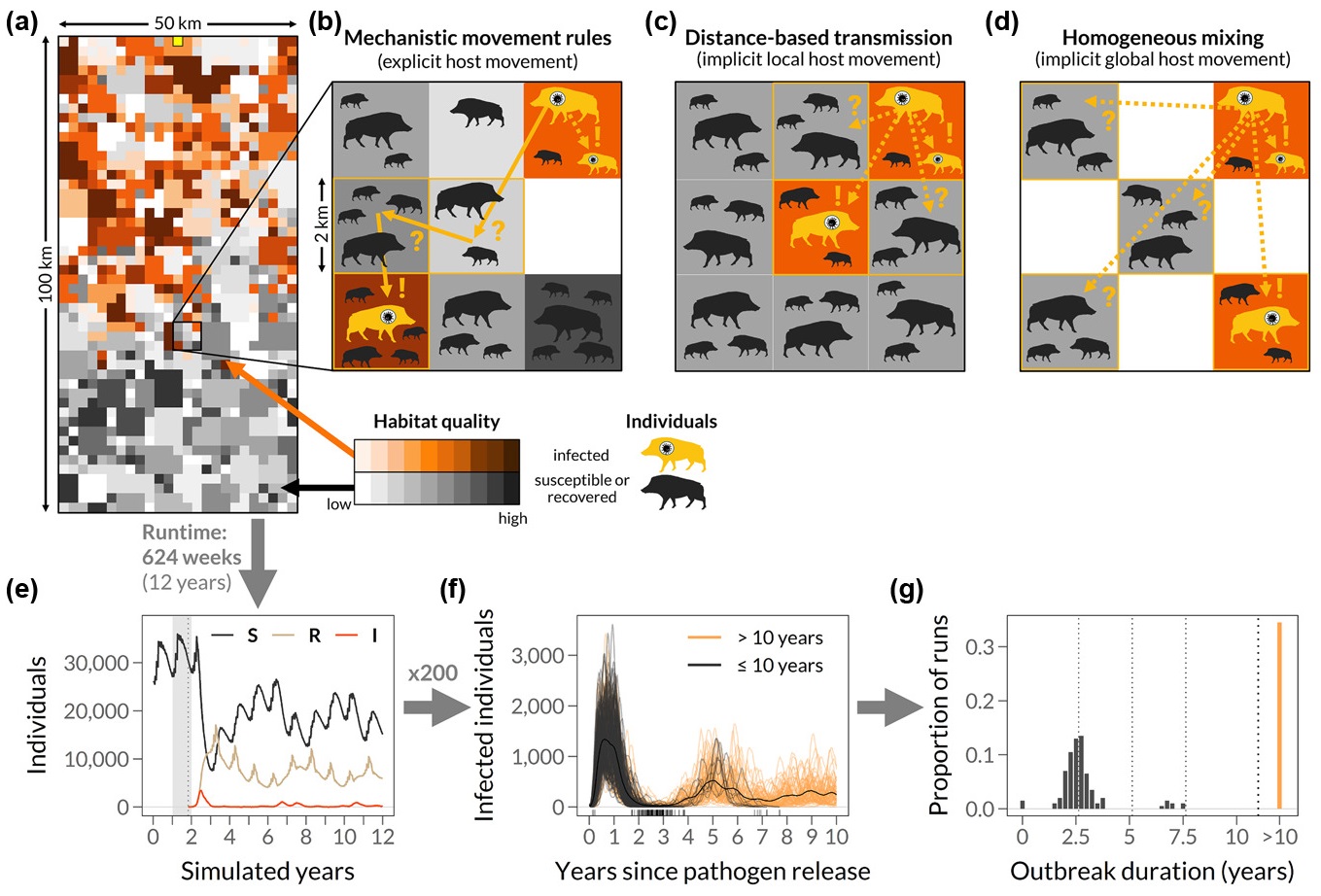
Scherer et al. 2020
Moving infections: individual movement decisions drive disease persistence in spatially structured landscapes. OIKOS, 129:651–667.
-
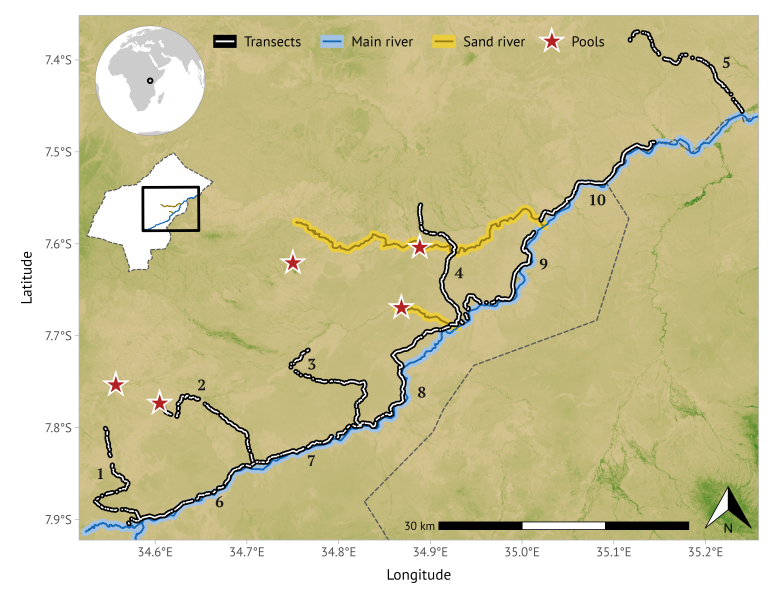
Schmied et al. 2024
Effect of human induced surface water scarcity on herbivore distribution during the dry season in Ruaha National Park, Tanzania. WILDL BIOL, e01131
-
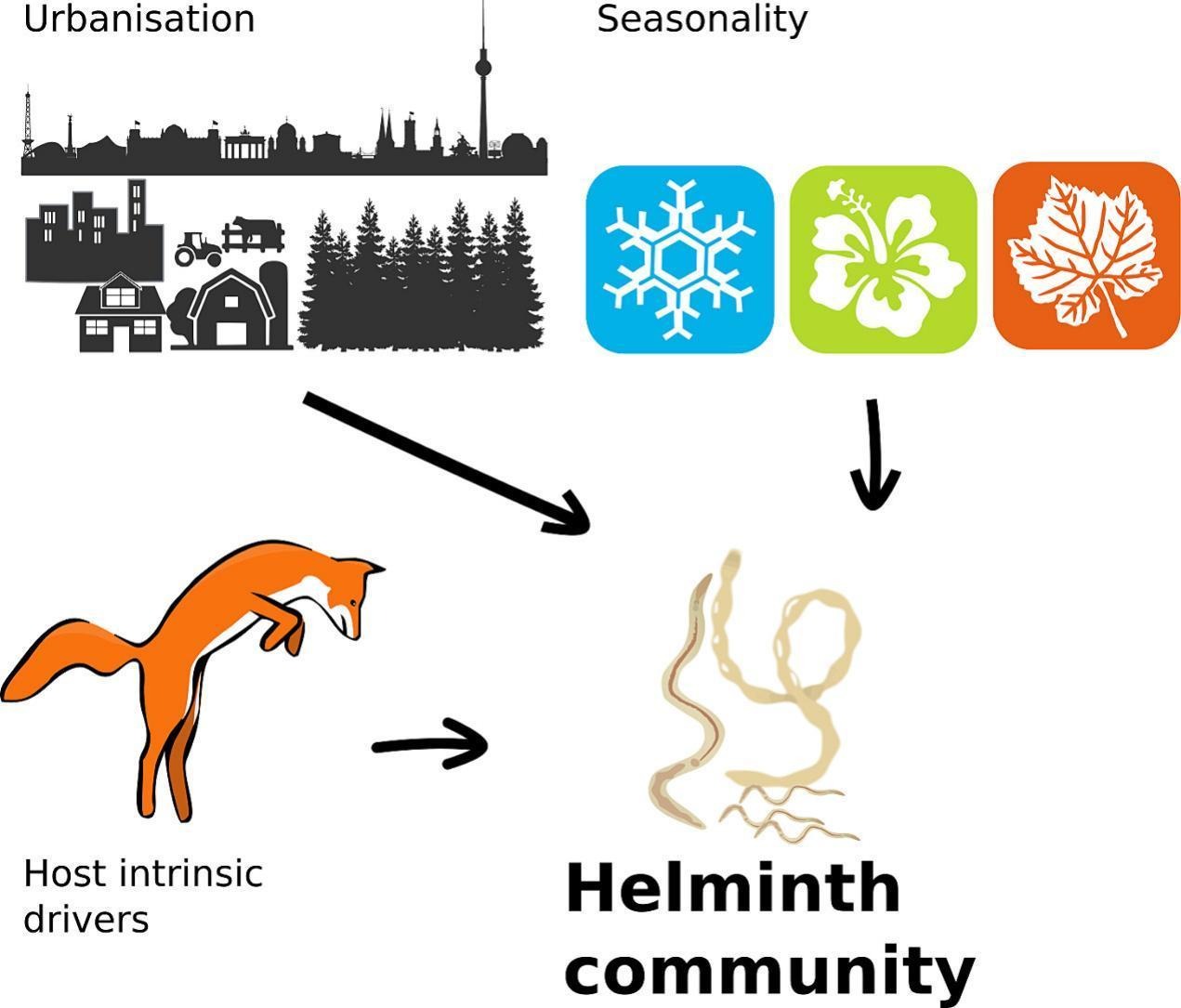
Scholz et al. 2024
Host weight, seasonality and anthropogenic factors contribute to parasite community differences between urban and rural foxes. STOTEN 936.
-
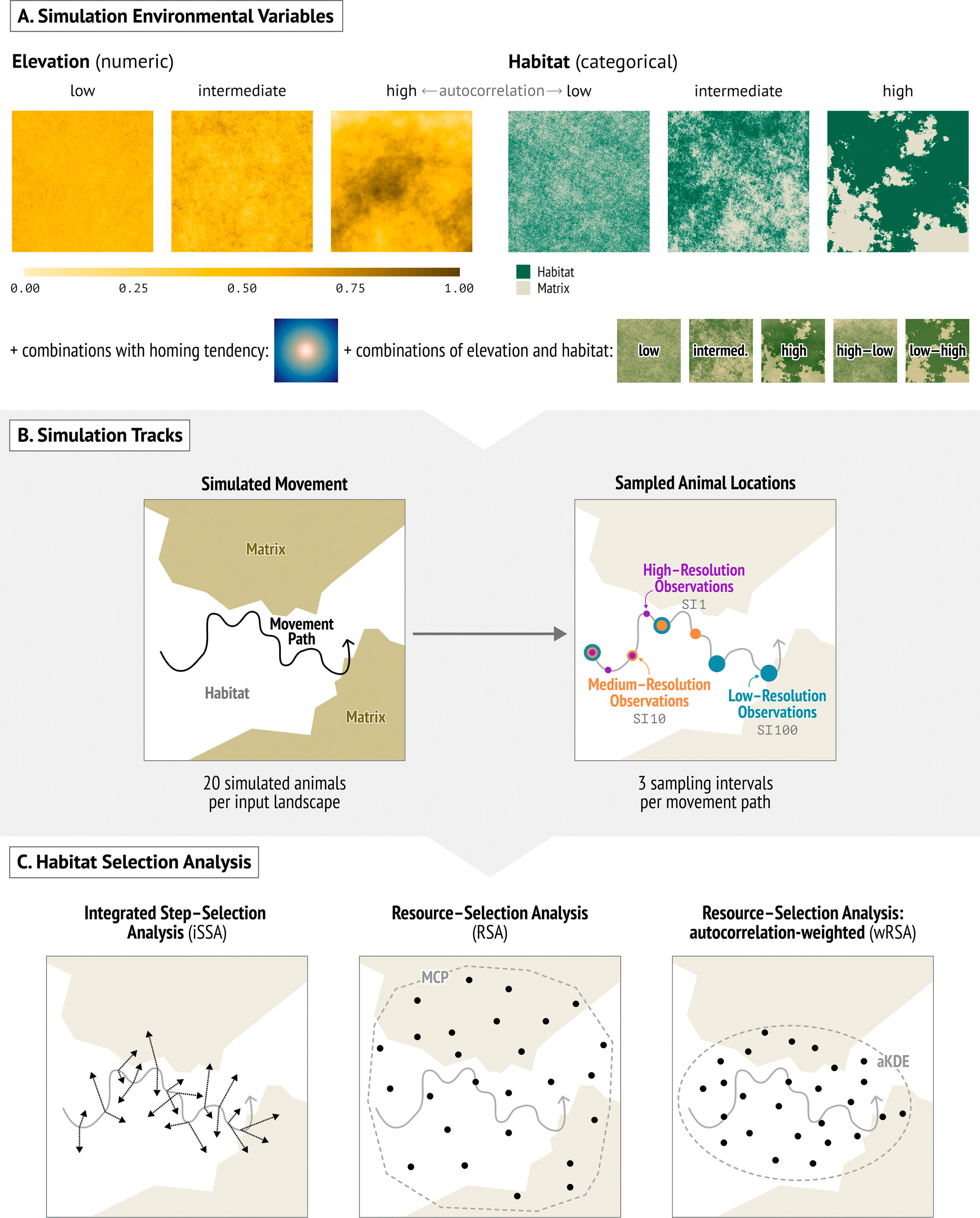
Signer et al. 2025
The 4th Dimension in Animal Movement: The Effect of Temporal Resolution and Landscape Configuration in Habitat-Selection Analyses. ECOL EVOL 15:e71434
-
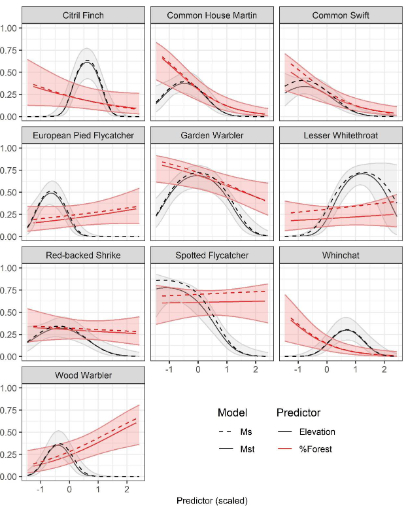
Sollmann 2024
Mt or not Mt: Temporal variation in detection probability in spatial capture-recapture and occupancy models. PEERJ 4, e1.
-
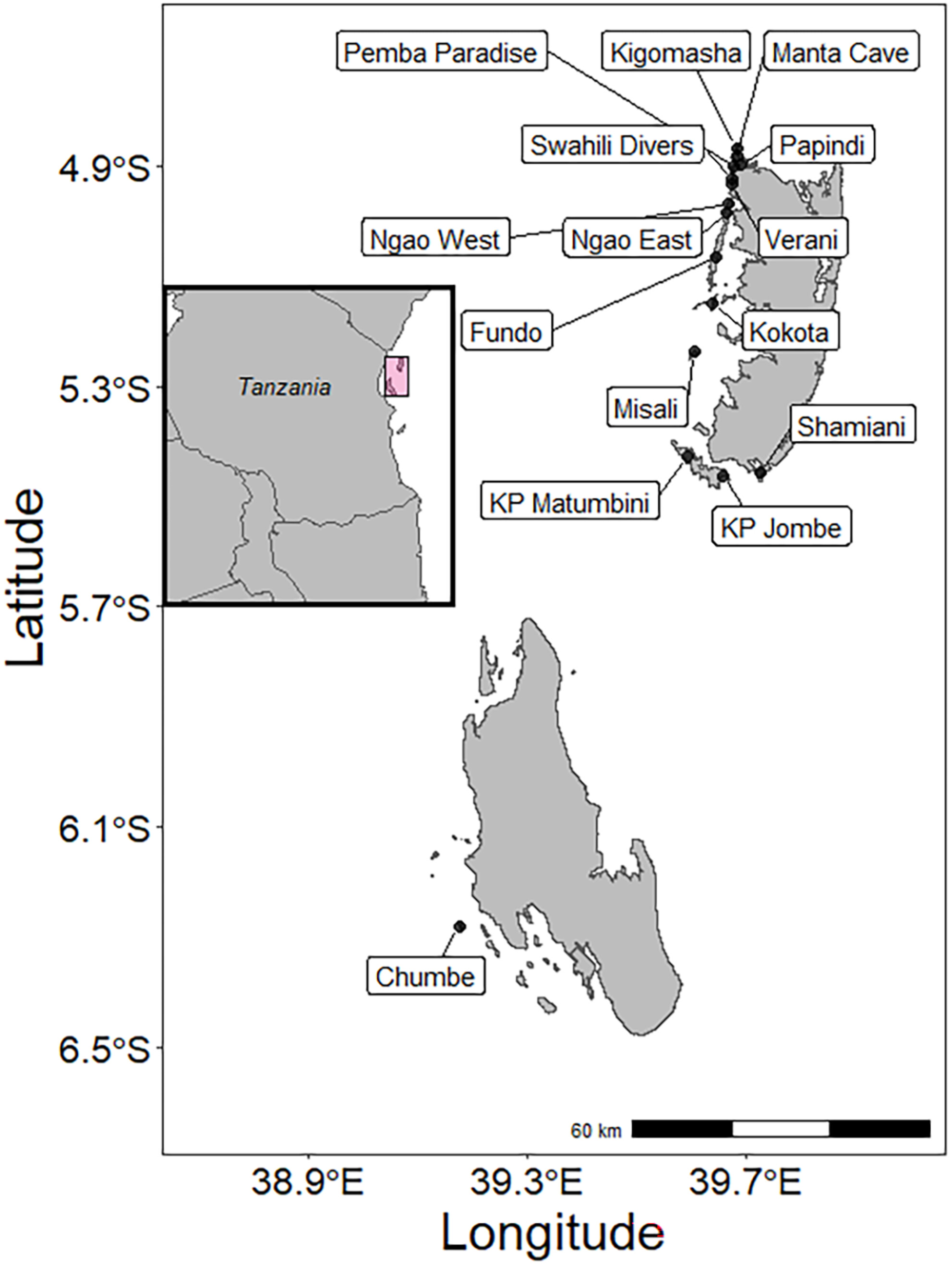
Sollmann, Caro 2024
Spatio-temporal metapopulation trends: The coconut crabs of Zanzibar. ECOL EVOL, 14, e70168.
-
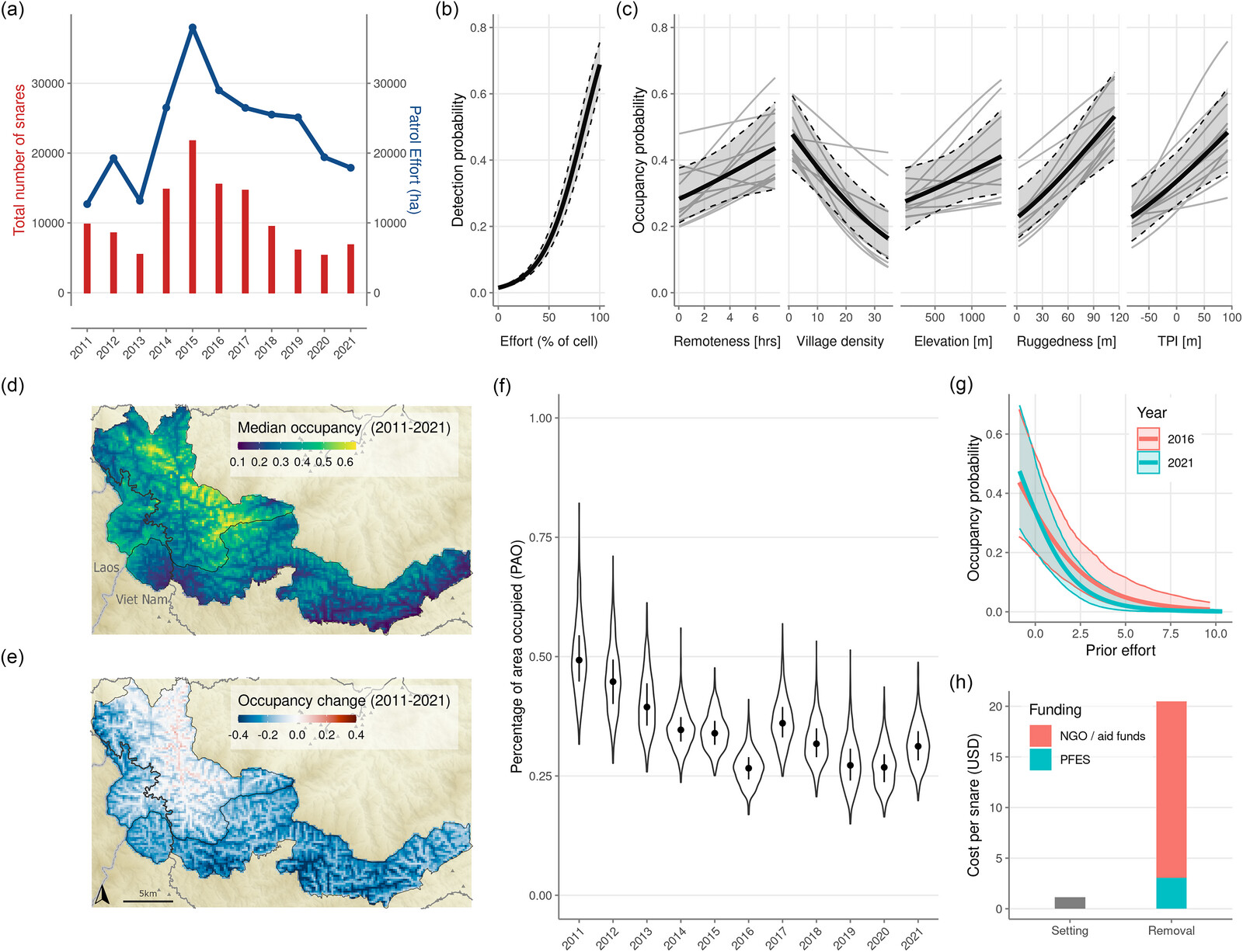
Tilker et al. 2024
Addressing the Southeast Asian snaring crisis: Impact of 11 years of snare removal in a biodiversity hotspot. CONSERV LETT, e13021.
-
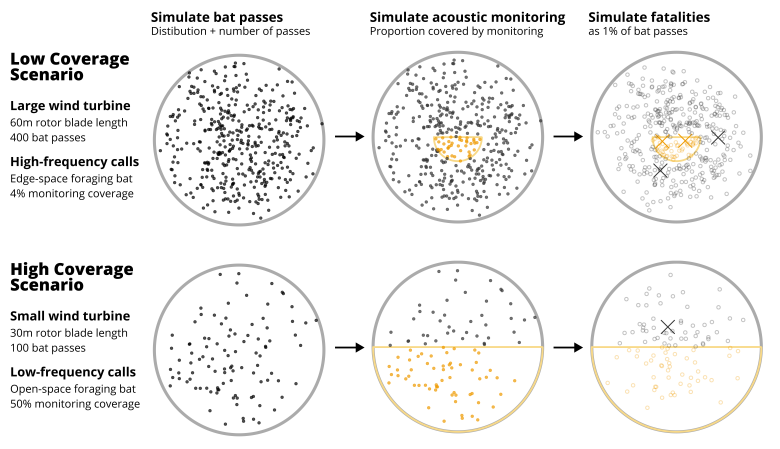
Voigt et al. 2022
Modelling the power of acoustic monitoring to predict bat fatalities at wind turbines. CONSER SCI PRACT, 4:e12841.